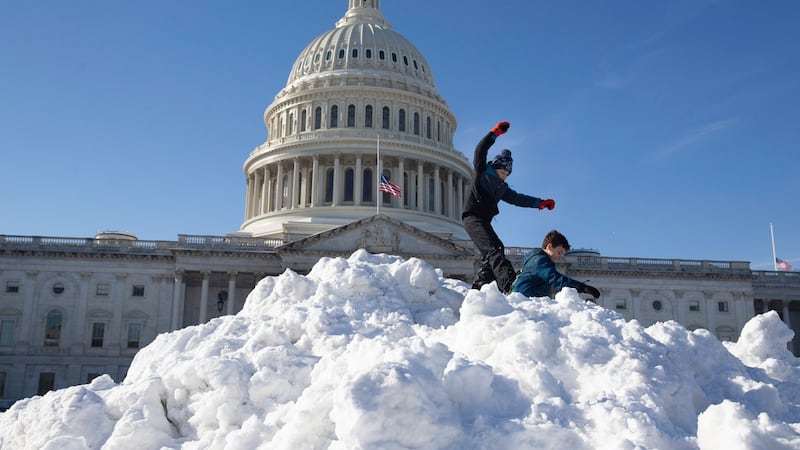The first big snow storm of the winter hit the Washington region last Monday.
In some places 35cm of snow fell. On the mall close to the Capitol impromptu snowball fights broke out.
Elsewhere, the situation was not so amusing. Hundreds of drivers were stuck, some for nearly 24 hours, on an 80km stretch of the I-95 motorway – a key road artery in Virginia connecting major areas along the east coast.
Among those forced to spend an uncomfortable night in their cars was a Democratic senator, Tim Kaine, who spoke of a "survival challenge" as he, along with hundreds of other drivers, juggled keeping the heat on in their vehicles against the potential of running out of fuel.
The episode showed the best of the United States as drivers shared food and water with other stranded road users and truck owners authorised the opening of their lorries to provide essential supplies, such as bread, to those stuck on the road.
However just like in Ireland, it didn't take long for the finger-pointing and the criticism to begin in relation to who may be responsible.
The highway had apparently not been gritted in advance. The state authorities would seem to have been caught on the hop. The storm initially started with rain which then turned to snow which fell at a pace that left them unable to catch up.
The roads were not the only places affected by the storm. On the railways along the east coast, an equally grim picture developed.
Trains halted
Passengers reported that some trains were halted for such a long time by fallen trees and snow drifts that arguments broke out on board as the restaurant cars began to run out of food, toilets began to back up and parents struggled to beg or borrow nappies for young children.
If these events had happened in Ireland, they would have dominated the Dáil and the phone-in programmes for a week or more.
The impact of the snow and presumably also of the surging incidence of Covid-19, which has seen many return to working from home, left the streets of city centre Washington almost deserted in the early part of the week. It was possible to walk across streets close to the White House without there being a car in sight.

Washington in the past was rated among the worst cities in the US for traffic congestion. However, a report last year found the onset of the pandemic and changes to working patterns led to a decline in the rankings from fifth to 12th among US metropolitan areas
From the perspective of an outsider, Washington appears to be a city that is reasonably easy to get around without a car.
It is relatively compact and certainly in our experience most places within the city centre areas at least are within walking distance – although the suburbs may be another matter entirely.
The streets are wide with good pavements. And for longer distances Washington, unlike some other cities in the US, has an extensive public transport network.
There is a six-line metro system that covers the city and surrounding counties in Virginia and Maryland although – presumably like everywhere else – grumbling about delays, track maintenance works and capacity constraints are not unheard of.
City buses provide services in areas such as Georgetown that are not served by the metro.
One of the features of these single-deck buses that looked surprising on arrival was the heavy duty folded rack attached to the front of the vehicle just in front of the driver.
Essentially these are for carrying bicycles.
Passengers can load their bikes on to these racks and then take a seat on board.
The buses have special mirrors that allow drivers to see the racks and passengers loading bicycles.
As a concept to an outsider it seemed surprisingly simple and led this correspondent to wonder if any similar idea had been considered by Minister for Transport Eamon Ryan, who is a strong supporter of cycling.
Public transport
However, one area in the Washington area that has not been well served by public transport is the main international airport.
Thousands of passengers from Ireland and elsewhere who arrive at Dulles airport – which is about 40km from Washington DC – either have to drive, or take a bus or a cab. Anyone who wants to take a train has to take a connecting bus first to a nearby metro station.
However, hope is on the horizon. An extension to the metro system that will bring it to Dulles airport is scheduled to be completed next year.
However, this whole project has not been without problems with which Ministers in Ireland could identify. In essence it is years behind schedule and over budget.
It is about 50 years since the idea of a rail line to Dulles airport was first proposed. This is about the same time frame that transport planners in Ireland have been talking about an underground line of some description in Dublin.
It may not be a consolation for people living in north Dublin that the long-planned metrolink project may be delayed until 2034. However, Ireland is not the only place where major infrastructure projects can take seemingly interminably long periods to deliver.





